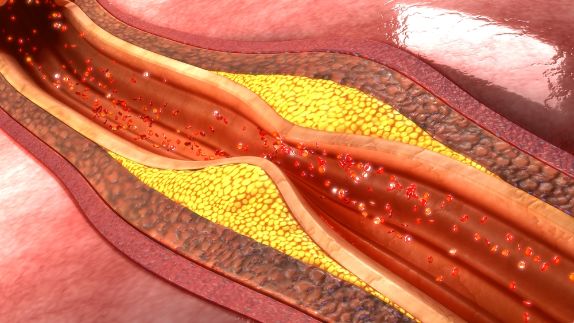Atherosclerosis symptoms occur when blood flow is impeded by the hardening of arteries that carry oxygen-rich blood to your heart and organs. This condition can result in serious health problems, such as a heart attack or stroke.
The first symptom of atherosclerosis is often a fatty streak or patch that starts on the wall of your artery. This is caused by microscopic damage to the inner lining of your artery.
This can happen in your arteries for several reasons, including high cholesterol levels, cigarette smoking, diabetes and conditions that cause your blood to clot more easily. As a result, fats, calcium deposits, and other substances clump together at the site of injury, building up a thick, sticky deposit called plaque.
As plaque continues to build up, it causes inflammation. White blood cells that normally protect the artery wall now irritate and inflame it, causing it to thicken even more.
Inflammation is caused by the dead foam cells that continue to build up at the site of endothelial damage and the dead cell debris. It can also occur when plaque ruptures or erodes, allowing bits of it to break away and enter your bloodstream.
Atherosclerosis can affect arteries anywhere in your body, ranging from the large arteries that supply blood to your heart and other organs (coronary artery disease) to the smaller ones that bring oxygen-rich blood to your arms or legs (peripheral artery disease).

Coronary artery disease: When atherosclerosis narrows the arteries that supply blood to the heart, it can lead to chest pain or a heart attack. It can also cause a blockage in the arteries that lead to your brain and cause a silent stroke or ministroke.
Peripheral artery disease: When atherosclerosis blocks the arteries that supply blood to your arms and legs, it can make you less sensitive to heat or cold and increase your risk of burning or frostbite. It can also reduce your ability to move and cause tissue death (gangrene).
Stroke: Atherosclerosis in the arteries that supply blood to your brain can slow down or block the flow of blood to parts of your brain, leading to a stroke. It can also lead to a blood clot in your brain that breaks loose and travels to another part of your body.
Embolism: A blood clot that breaks off from an atherosclerotic plaque and enters the bloodstream, then blocks an artery, can cause a cerebral embolism. This can occur when a wandering clot or other particle, called an embolus, travels from the arm or leg to the brain.
Treatment includes lowering your risk factors for atherosclerosis by making healthy lifestyle changes. This means eating a healthy diet, getting regular exercise, and quitting smoking. It can also include medicines to reduce your cholesterol and high blood pressure.
Early detection and treatment can stop atherosclerosis from worsening, prevent a heart attack or stroke and improve your overall health. Talk to your health care provider about your risk of atherosclerosis, and pay attention to the early signs and symptoms that indicate a lack of blood flow.








